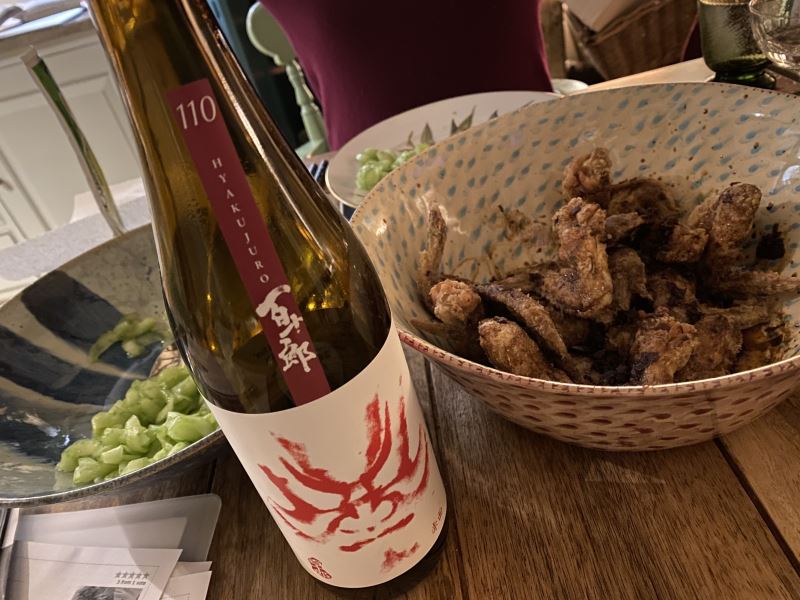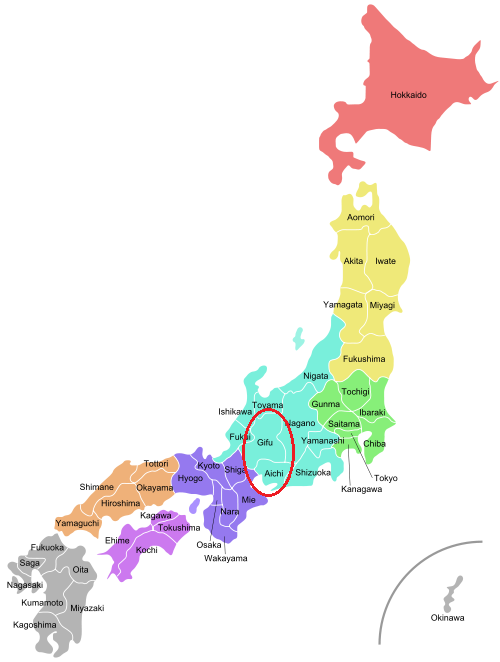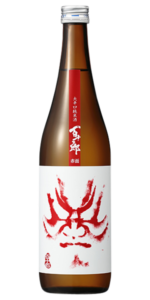
Straight out of Nagoya, Aichi Prefecture, these famous chicken wings (Nagoya no Tebasaki) are quite unlike the usual the other chicken dishes we know and love from Japan.
The first time I tried these I was with Hayashi Honten Boss, and all-round awesome lady, Rieko Hayashi, in one of Gifu City’s many izakayas. Gifu is the prefecture just to the north of Aichi and, with their love of richer flavours, these wings are insanely popular there.

Gifu shares a boarder with 7 other prefectures and is completely landlocked. Aichi is famous for its soy sauce and mirin so the Tebasaki recipe is an exciting balance of sweet & umami with fiery pepper.
There are a bunch of different style of Nagoya no Tebasaki, with different restaurants putting their own vibe on the recipe, but there’s always one defining ingredient that everyone uses: white pepper. This gives the wings their fiery flavour and sets them apart from other chicken wings out there.
The wings can be sweeter, include toasted sesame seeds, or be more chilled on the amount of white pepper. My version (and I’ve played around quite a lot with this to nail it) majors on the pepper and soy sauce with a hint of sweetness and no sesame seeds. Some places use starch before deep frying, some don’t; I’ve tried it both ways and much prefer a bit of starch before frying for extra crunch.
Where I started was by finding a Tebasaki recipe that was similar in style to the one I remembered and then messing around, iteratively tweaking the recipe each time, until I got what I wanted. The original recipe is (apparently) close to the Sekai no Yamachan restaurant chain’s but sufficiently different (and probably not orthodox with the additional of maple syrup, for example) that I’m calling them TENGU NO TEBASAKI.
All the Tebasaki recipes I’ve seen have way too little sauce for my liking, it also wasn’t rich enough. I’ve over doubled the the wet ingredients and (as you’ll see) reduced it down to intensify.
1. Put all sauce ingredients (save for the rice vinegar and maple syrup) into a saucepan, bring to boil and reduce by about half.
2. Taste (it’ll be crazy rich) and add some maple syrup and the little bit of rice vinegar until you feel there’s a nice balance. Don’t make the sauce too sweet but you’ll need a bit to balance out all that soy (kinda depends on how much you MacGyvered the mirin). Leave sauce until required.
3. Pat dry chicken wings with kitchen paper.
4. Coat chicken wings with corn flour getting it into all the crevices, shake off excess.
1. I use a deep fat fryer but it’s exactly the same principle if you’re doing it in a pan/wok. you’re just going to need a thermometer and a bit more control. Most important thing: don’t overcrowd the oil! These can easily be done in small batches so chill, sip some sake and don’t overcrowd that oil!
2. Heat oil to 160oC
3. Carefully place chicken in the oil.
4. Fry for about 5 minutes until the chicken becomes only slightly golden, turning a few times if in a pan/wok.
5. Transfer to rack lined with kitchen paper. Leave for 10-15 mins.
1. Increase temp of oil to 180oC.
2. Carefully place chicken in the oil and fry for 3-4 mins until golden brown, again, turning if necessary.
3. Transfer to rack lined with kitchen paper.
1. Using a basting brush smother the face-up side of the wings in sauce and sprinkle with a generous amount of white pepper (first time you do this go easy, you can always add more at the table but I find you need waaaaaay more than you think).
2. Turn over the wings and repeat.
If you don’t have a deep fat fryer, and so are having to do this in smaller batches, keep your wings warm in the oven set to at least 75oC.

Having discovered Nagoya no Tebasaki wings in Gifu Prefecture, I’m inclined to recommend our two Gifu-based breweries: Michisakari & Hayashi Honten.
At the time, when Hayashi-san introduced me to the dish, we were drinking Hyakujuro “Red Face” Junmai Karakuchi, and it was just perfect; so I think it’s only right to recommend that particular sake here.
